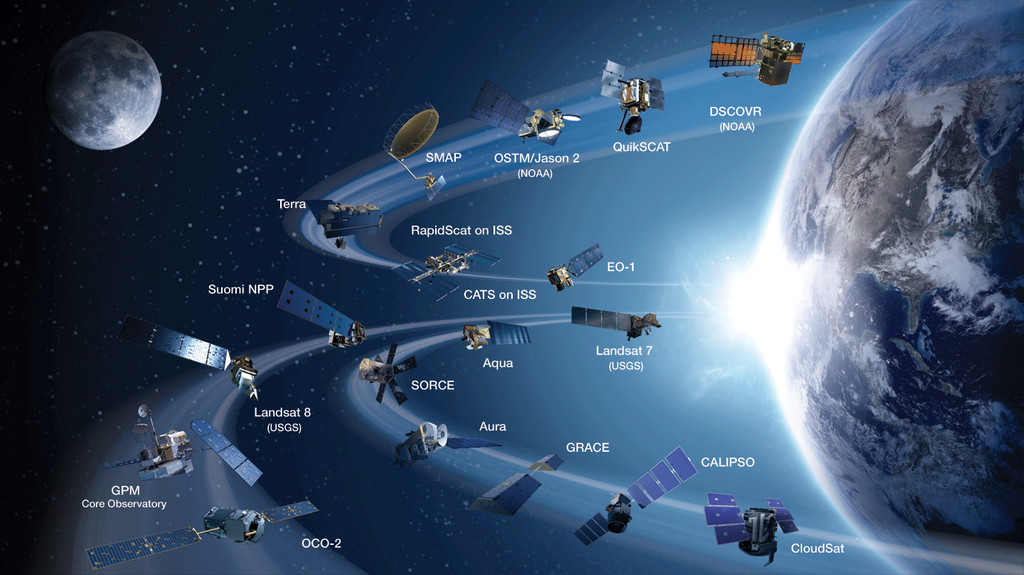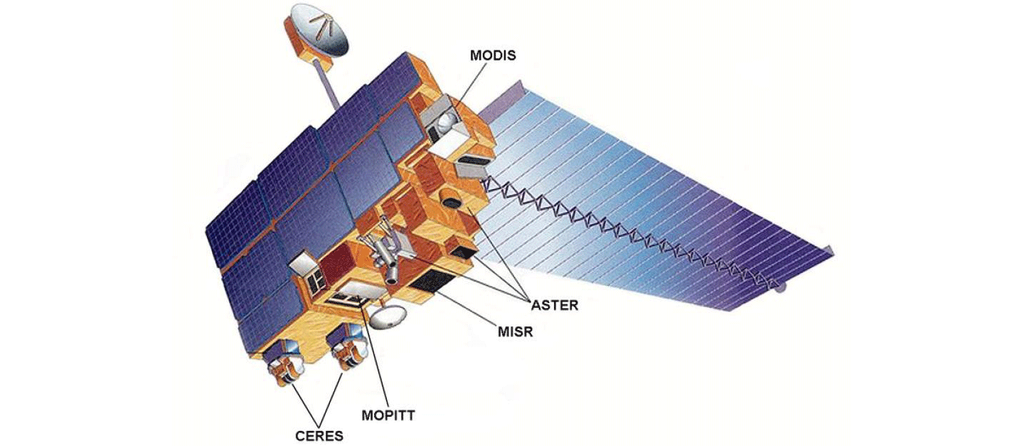1 min read
Brown Dwarfs in IC 348 (NIRCam Image)
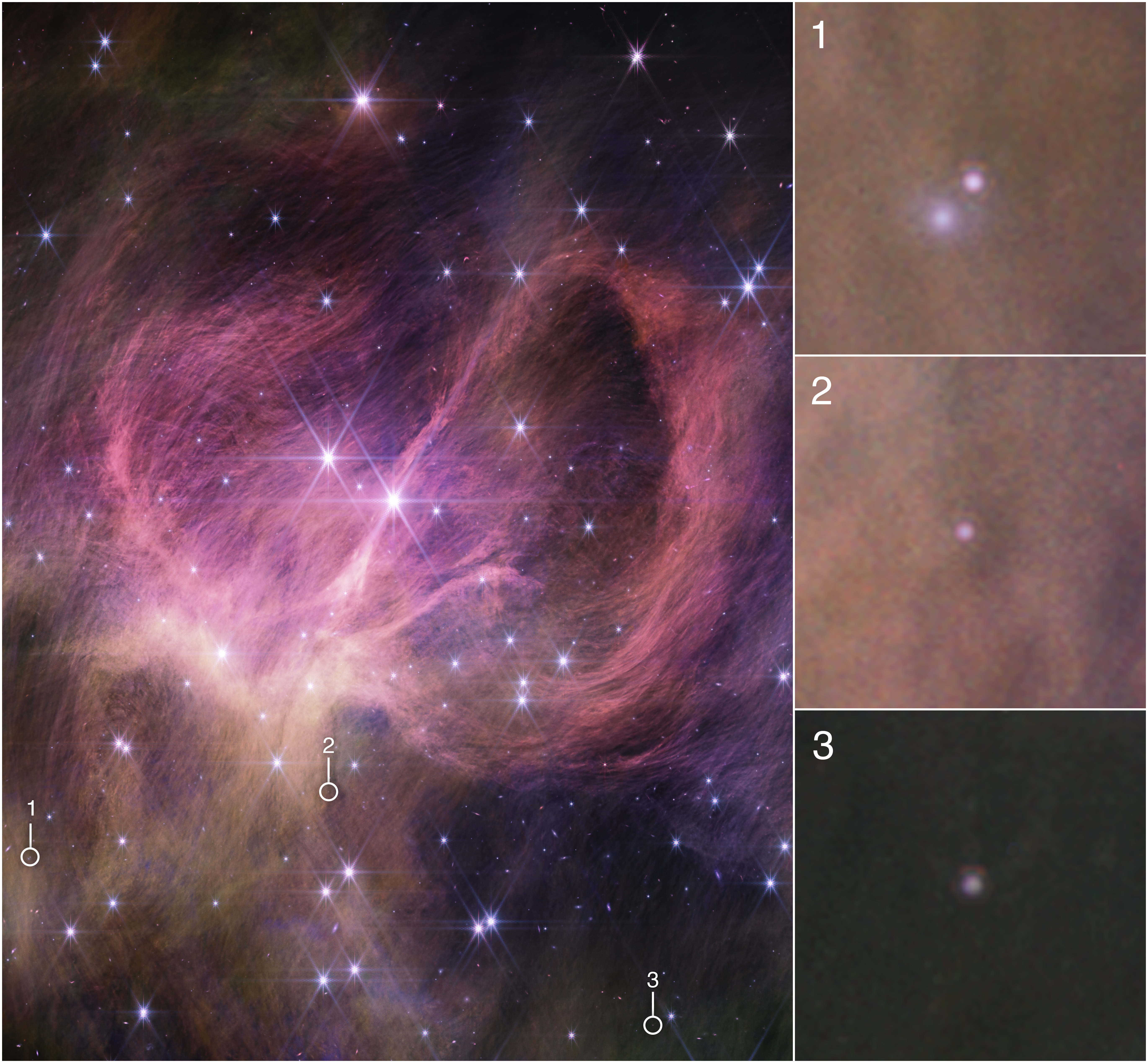
This image from the NIRCam (Near-Infrared Camera) instrument on NASA’s James Webb Space Telescope shows the central portion of the star cluster IC 348. Astronomers combed the cluster in search of tiny, free-floating brown dwarfs: objects too small to be stars but larger than most planets. They found three brown dwarfs that are less than eight times the mass of Jupiter, which are circled in the main image and shown in the detailed pullouts at right. The smallest weighs just three to four times Jupiter, challenging theories for star formation.
The wispy curtains filling the image are interstellar material reflecting the light from the cluster’s stars – what is known as a reflection nebula. The material also includes carbon-containing molecules known as polycyclic aromatic hydrocarbons, or PAHs. The bright star closest to the center of the frame is actually a pair of type B stars in a binary system, which are the most massive stars in the cluster. Winds from these stars may help sculpt the large loop seen on the right side of the field of view.
About the Object
- R.A. PositionR.A. PositionRight ascension – analogous to longitude – is one component of an object's position.03:44:34.28
- Dec. PositionDec. PositionDeclination – analogous to latitude – is one component of an object's position.+32:09:43.10
- ConstellationConstellationOne of 88 recognized regions of the celestial sphere in which the object appears.Perseus
- DistanceDistanceThe physical distance from Earth to the astronomical object. Distances within our solar system are usually measured in Astronomical Units (AU). Distances between stars are usually measured in light-years. Interstellar distances can also be measured in parsecs.About 1,000 lightyears
- DimensionsDimensionsThe physical size of the object or the apparent angle it subtends on the sky.This image is about 1.9 arcminutes across (.6 lightyears)
About the Data
- Data DescriptionData DescriptionProposal: A description of the observations, their scientific justification, and the links to the data available in the science archive.
Science Team: The astronomers who planned the observations and analyzed the data. "PI" refers to the Principal Investigator.This image was created with Webb data from proposal: 1229 (C. Alves de Oliveira). Image Processing: Alyssa Pagan (STScI)
- InstrumentInstrumentThe science instrument used to produce the data.NIRCam
- Exposure DatesExposure DatesThe date(s) that the telescope made its observations and the total exposure time.28 August 2022
- FiltersFiltersThe camera filters that were used in the science observations.F277W, F360M, F444W
- Object NameObject NameA name or catalog number that astronomers use to identify an astronomical object.IC 348
- Object DescriptionObject DescriptionThe type of astronomical object.Star-forming region
- Release DateDecember 13, 2023
- Science ReleaseNASA’s Webb Identifies Tiniest Free-Floating Brown Dwarf
- CreditImage: NASA, ESA, CSA, STScI, Kevin Luhman (PSU), Catarina Alves de Oliveira (ESA)

These images are a composite of separate exposures acquired by the James Webb Space Telescope using the NIRCam instrument. Several filters were used to sample specific wavelength ranges. The color results from assigning different hues (colors) to each monochromatic (grayscale) image associated with an individual filter. In this case, the assigned colors are: Blue: F277W, Green: F360M, Red: F444W
Related Images & Videos
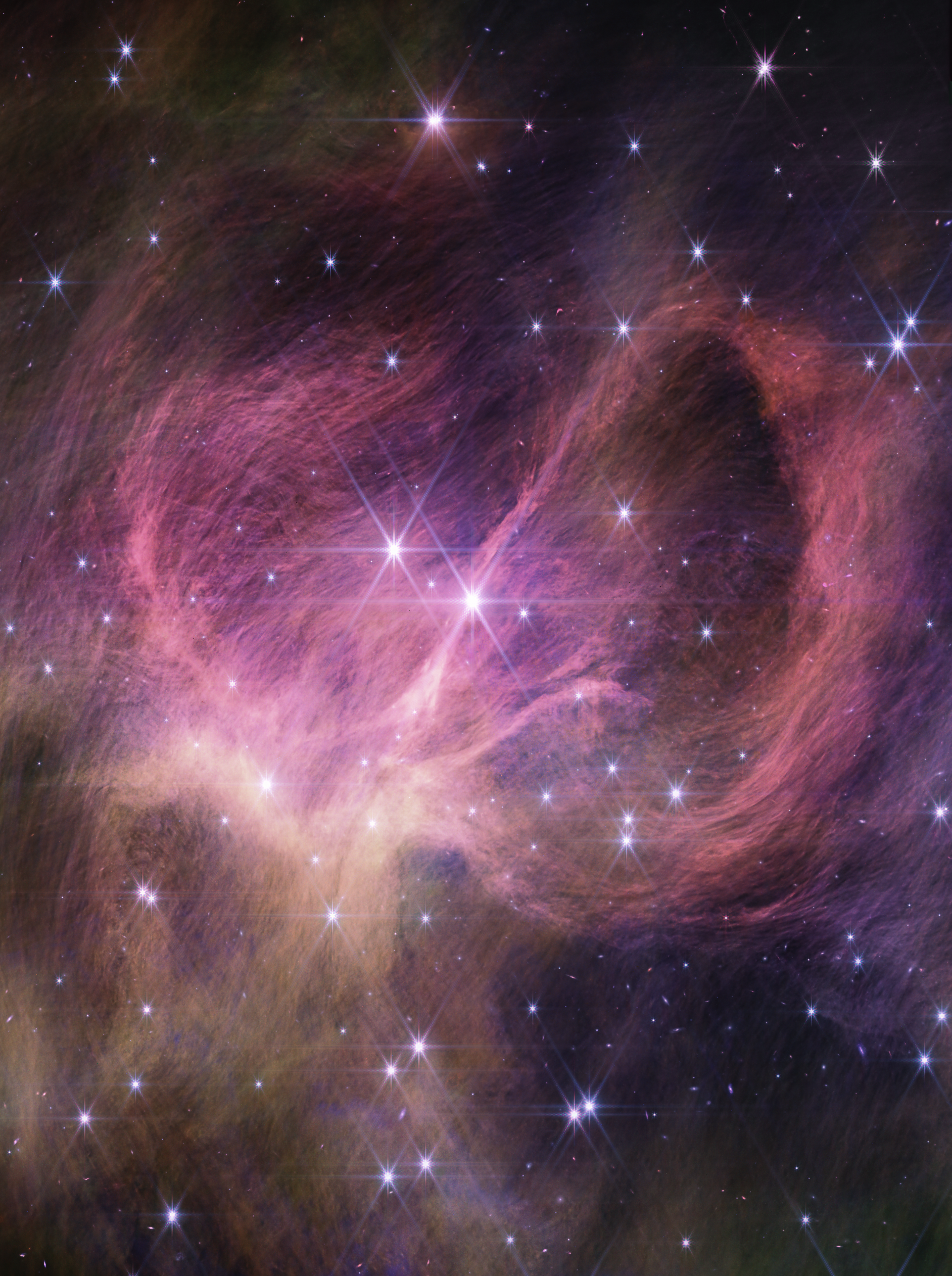
IC 348 (NIRCam Image)
This image from the NIRCam (Near-Infrared Camera) instrument on NASA’s James Webb Space Telescope shows the central portion of the star cluster IC 348. Astronomers combed the cluster in search of tiny, free-floating brown dwarfs: objects too small to be stars but larger than...
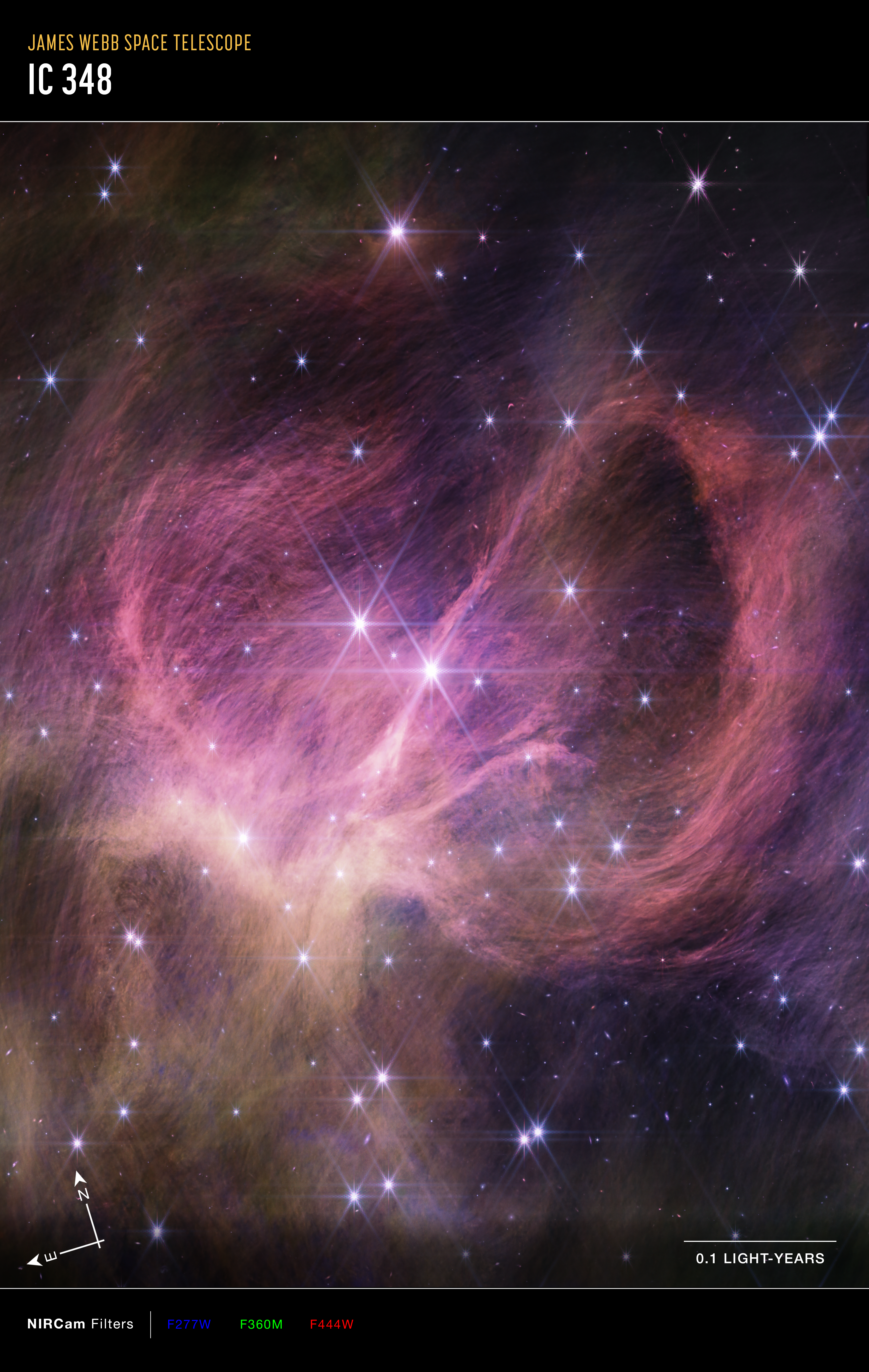
IC 348 (NIRCam Compass Image)
This image of star cluster IC 348, captured by Webb’s Near-Infrared Camera (NIRCam), shows compass arrows, scale bar, and color key for reference. The north and east compass arrows show the orientation of the image on the sky. Note that the relationship between north and east on...
Share
Details
Laura Betz
NASA’s Goddard Space Flight Center
Greenbelt, Maryland
laura.e.betz@nasa.gov
NASA, ESA, CSA, STScI, Kevin Luhman (PSU), Catarina Alves de Oliveira (ESA)














